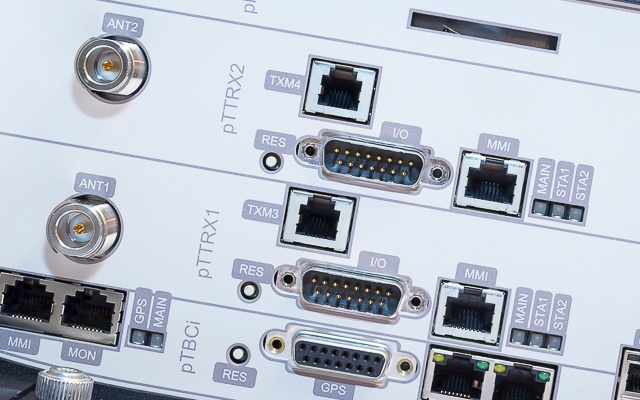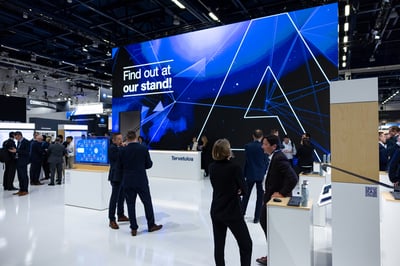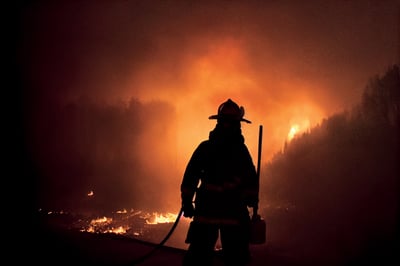Engineers are awesome. I love it when they talk about their area of expertise. They may start a sentence in a regular way and then continue with a flow of terms and abbreviations that mean little to me. They often get quite excited about this too. It’s fascinating.
I also love engineers because they design and make things - such as base stations that serve PMR radios. Here are six reasons why I think base stations are fascinating, and why you should too.
1. Feelings are involved
In 1996, when TETRA was still new, the engineer who led our base station development team described the project. “Designing a TETRA base station was technically so difficult,” he said. “There were times when I did not think that we would make it”. He spoke emotionally (for a Finn) and I believe there was the glint of a tear in his eye. “But the team, I admire them, they were so good. When something didn’t work, they always came up with another solution”.
2. Triumph can follow adversity
Conquering one challenge after another, this fabulous design team got the world’s first TETRA base station working. Today, base stations are probably performing beyond their wildest dreams back then.
3. Simple and not so simple ways to increase radio coverage
Radio coverage is the area around a base station within which radio users can talk to each other. It’s probably a TETRA network’s most important property.

Here are some common ways to boost coverage (getting rather technical here).
- Using taller base station antennas
- Maximising the base station transmit power, with higher-power transmitters and by low-loss transmit combining methods
- Increasing the base station receiver sensitivity, for example, with clever Digital Signal Processing algorithms, or by taking advantage of diversity in various ways
- Sectorising to increase coverage
- Advanced antenna solutions, such as omni-directional antennas, high-gain panel antennas, or high-gain X-polarized antennas, as well as mast-head amplifiers also improve coverage.
4. Even simple ways to increase coverage may not be so simple
All these methods have their drawbacks though:
- It may be difficult to set up taller antennas
- Using a very high power (100W or more) base station transmitter is not practical. In addition, it would not help the base station "hear" the radios any better (uplink)
- Higher transmission power drains radio terminal batteries more quickly
- Improving the antenna gain needs a bigger antenna.
5. An unmatched technical breakthrough
The third-generation TETRA base station was launched in 2004, and I still remember the excitement. Three improvements achieved revolutionary results in radio coverage:
Employing six receivers per carrier (not just the two or three typical then) using advanced diversity combining methods made it possible to build a high-gain virtual omni solution.
- High-gain means the base station uses both diversity gain and high antenna gain methods.
Diversity means the base station uses two or more receiver antennas. Because they receive from more than one direction, one antenna may be able to receive a signal too weak for the other.
Virtual omni means the base station provides coverage over several sector-like areas, and then combines them, resulting in circular coverage. The base station is thus ‘virtually omnidirectional’. This brings significant coverage improvements. - Secondly, the base station allowed the use of advanced cross-polarized antenna solutions, commonly used in commercial mobile networks.
- Thirdly, the base station was able to yield a very high transmission power.
These improvements meant the base station achieved up to 50% more coverage. To get the same increase with older methods would require an antenna about twice as high. Since then, the radio terminals have also become significantly more sensitive, bringing further coverage improvements.

6. Base station coverage does not have to be circular
A typical base station will provide more or less circular (or omnidirectional) radio coverage, which is great for PMR users. Most of their calls are group calls and a circular coverage pattern makes it more likely that more than one group member will be within the area of a single base station. When teams work close to each other, this is almost always true.
This is important because a single base station serving all group call members will make the most efficient use of frequencies.
What if you need to cover an area such as a road, a railroad, or a pipeline? Radio users would need continuous, uninterrupted coverage along such a feature, but not very far away from it. Circular coverage is not the best option for this purpose.
Instead, you need very directional coverage. This is achieved by a base station using two cross-polarized panel antennas set back-to-back, allowing them to handle both transmission and reception in two directions. The base station can then cover a long, narrow area. What’s more, this setup achieves diversity advantages from both sides.
There is also something we call a high-gain fjord solution, which great radio coverage in a long, narrow area in one direction.
So there you have it - six reasons I find PMR base stations fascinating.
Yet you don’t have to be fascinated with base stations to appreciate a larger radio coverage area or a special shape of radio coverage. If you need such a solution, the TB3-series TETRA base stations are your choice. TB3 base stations are the only TETRA base stations that can achieve coverage-maximizing, high-gain, virtual omni configuration. They are also the only ones on the market that can provide directional coverage, too.
And if you still think your users would enjoy better radio coverage if they only had higher-power TETRA radios, think again. Read this blog post for the truth about watts in PMR radios, or you can download the infographic:





